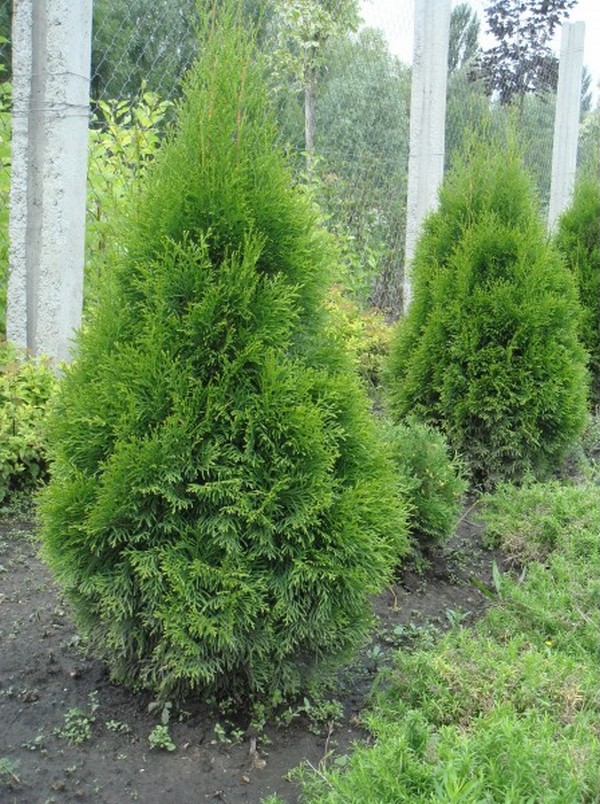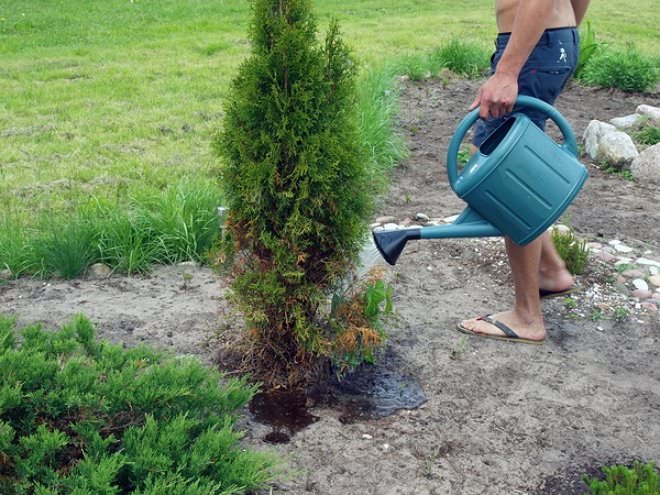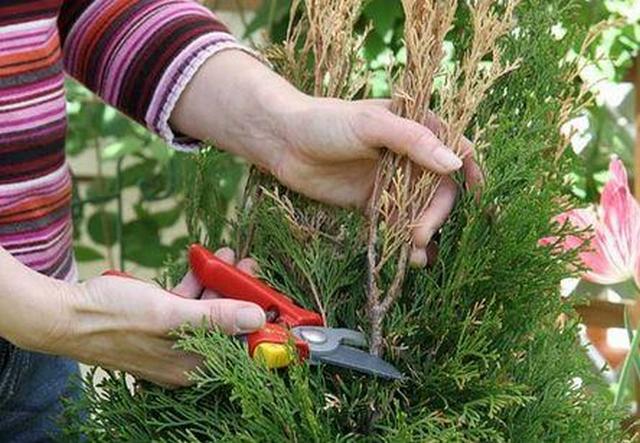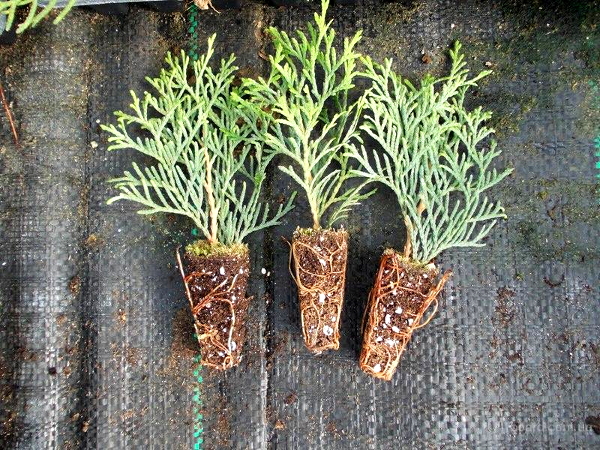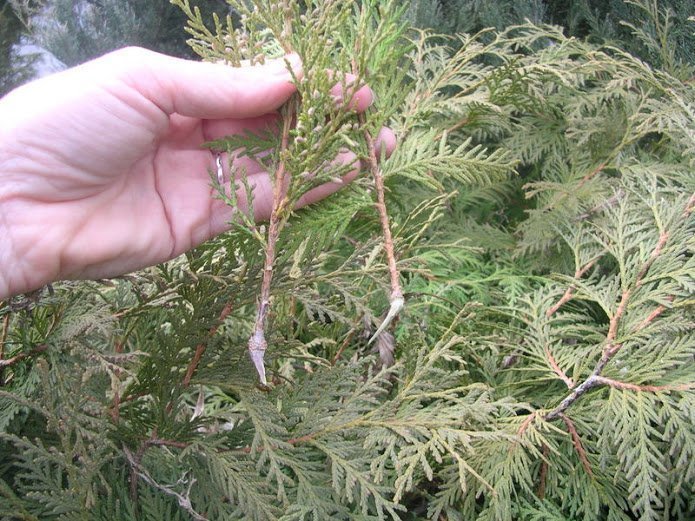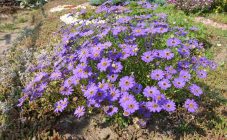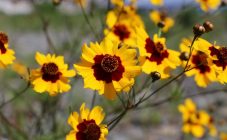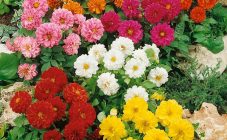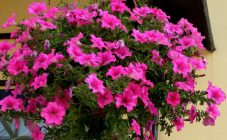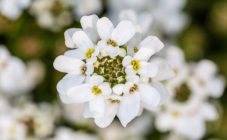Content:
Today, more and more often, in the adjoining territories or personal plots, you can see beautiful plantings of thuja. This shrub is of interest to gardeners not only for its unique appearance, but also for its unpretentious care. One of the common varieties is thuja western Holmstrup.
Description of thuja Holmstrup and its characteristics
This plant belongs to the ornamental evergreen coniferous shrubs. Its distinctive feature is considered to be a low growth rate of shoots: in one year the plant can grow by 12 cm, and in width - no more than 4 cm. The shrub reaches a height of 10-15 m.
Throughout the goal, its scaly needles retain a stable dark green color. Shoots branch many times, which gives the thuja crown density and density. On the branches, fruits are formed in the form of rounded brown cones 0.5–0.8 cm long. The bark of the trunk has a reddish brown tint. It periodically (once every 3 - 5 years) exfoliates from the trunk. The sawn timber has a characteristic brown color. It is durable, soft and low in resin, which makes it possible to use it for the manufacture of furniture.
In the description of thuja western Holmstrup, the following properties are given:
- durability (200 years or more);
- decorativeness;
- frost resistance (able to withstand frosts down to −45 ° С);
- unpretentiousness to soils;
- ease of care.
Features of planting and care
Thuja Holmstrup prefers to grow in open sunny areas. If you plant a plant in the shade, its growth may stall, the color of the needles will become pale, and its structure will be loose. The depth of the groundwater should be within 1.5–2 m.
The shrub is undemanding to the soil. It can be medium fertile, loose. Its acidity level should be close to neutral. Before planting, the site must be dug up and all weeds must be removed. The dimensions of the planting pit can be within 1 X 2 m.
To improve the survival rate of the plant, the earth that was extracted when digging the planting hole is mixed with humus.
When planting, the young plant is removed from the container along with a clod of earth. All its roots are neatly straightened and placed around the perimeter of the pit. Planting depth should be such that the root collar is flush with the soil surface. The soil near the trunk is compacted.
In the near-trunk circle, a side is built, the height of which can be in the range of 4 - 7 cm. It is used when watering shrubs. To preserve soil moisture after watering as long as possible, experienced gardeners recommend mulching the soil near the trunk. To do this, you can use sawdust, pine bark or chips.
The first 30 days after planting the plant in open ground, it must be watered after 3 - 5 days.
Since the thuja Holmstrup belongs to long-livers, it is recommended to choose a place on which it will grow constantly from the first time. It is impossible to transplant an adult plant.You should first determine the distance between plants. So that the crowns of adult plants do not shade each other, as well as in order to be able to access the plant from all sides for caring for it, the most optimal distance between the thuja bushes is considered to be 1–1.5 m.
Thuja loves moisture. Therefore, it is recommended to water an adult plant every 7 to 10 days. At the same time, at least 10 liters of liquid is applied under each bush. With a lack of moisture, thuja needles acquire a yellowish tint and can crumble.
For 1-2 years after planting, the plant does not require additional feeding. He has enough of those nutrients that were introduced into the planting pit. After this period, experienced gardeners advise to remove the top layer of soil under the plant and replace it with humus (layer thickness within 6-15 cm).
In spring and summer, the thuja bush needs feeding. For this, you can use special complex mineral fertilizers designed for coniferous crops.
Thuja crown renewal occurs periodically. In order to prevent the process of its decay, it is recommended to remove dry branches and needles. The bush responds well to pruning. In this case, the crown is given the desired shape (ball, pyramid, cylinder). After that, its branches grow faster, and the "cap" becomes thicker. If the trunk splits into several thick branches, leave the strongest one. In early spring (before the buds open) the tips of the branches are cut off. This will speed up their growth.
Despite the fact that this variety of thuja is winter-hardy, it requires little preparation for winter. To do this, you need to mulch the peri-stem circle by using dry grass or fallen leaves. Thuja branches grow vertically. This leads to the fact that a layer of snow accumulates on them. This can lead to their breaking off. To prevent this, for the winter it is recommended to wrap the thuja crown with soft material, for example, nylon, burlap, lutrasil.
Reproduction of thuja
Thuja can be propagated in several ways. Among the most common:
Seminal
Seed propagation is rarely used. This is due to the length of the process. In addition, during seed reproduction, the varietal properties of the crop are not always preserved.
Thuja seeds in the middle of autumn are already fully ripe. You cannot store them. Immediately after collection, they must be refrigerated for 3 to 4 months. For sowing seeds, you need to prepare a spacious container, which is filled with a soil mixture of turf, peat and sand (1: 1: 2). A drainage system is constructed at the bottom of the tank. Furrows are made in the soil at a distance of 5 - 7 cm. Seeds are sown in them and covered with a thin layer of soil. The surface of the ground is moistened from the sprayer.
Young plants should be in a well-lit place, away from direct sunlight. The air temperature in the room should be within 15-25 ° С. During the month, it is recommended to feed the soil 2 times with mineral fertilizers.
After a year, each plant must be transplanted into a separate container. For hardening, the shoots can be taken outside in warm weather. Thuja are planted in open ground, the age of which has already reached 3 to 4 years.
Vegetative
As for the vegetative propagation method, it is considered the simplest and most beneficial. Cuttings are prepared in late autumn. Their length can be in the range of 15–20 cm. The lower part is cleared of needles and moistened into a root formation stimulator.
For rooting cuttings, you also need to prepare a soil mixture of leafy earth, sand, taken in equal quantities. In order to avoid contamination of cuttings with viruses and pathogenic bacteria, it is recommended to heat the prepared soil or rinse it with boiling water.
Cuttings are placed in pits 3–6 cm deep. The distance between seedlings can be from 6 to 9 cm. After planting, the soil must be watered and the container must be covered with foil. Rooting takes place within 2-3 months. The room temperature should be between 22-25 ° C.
After the first young branches appear, the shelter can be removed for ventilation, watering and loosening the soil. It is possible to plant seedlings in separate containers only after a year.
With the onset of spring, young plants are planted in a permanent place in open ground.
Diseases and pests
Despite the fact that thuja is much more resistant to diseases and pests than other conifers, it is recommended that you follow some rules that will help prevent infection with diseases or attack by pests. Some of the simplest rules include the following:
- use only healthy seedlings for planting;
- periodically inspect the crown and bark of the bush;
- follow the rules for pruning and feeding the plant;
- for prophylaxis, treat the crown with fungicides.
Subject to the simple rules of caring for thuja, the plant will delight the eye with its beautiful and unique appearance for many years.
